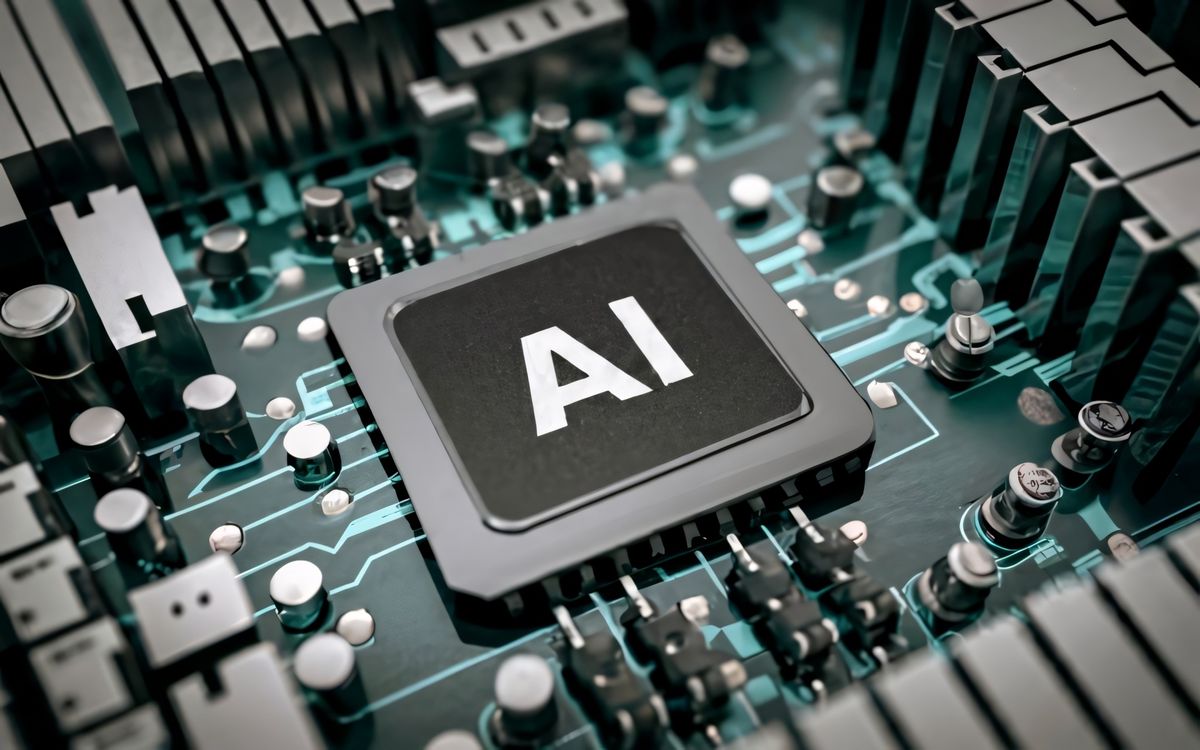In today’s digital age, productivity is more important than ever, and AI tools are at the forefront of enhancing efficiency and streamlining workflows. With the right AI tools, individuals and organizations can automate mundane tasks, manage time more effectively, and collaborate seamlessly. This article will explore the best AI productivity tools available in 2023, their benefits, and how to integrate them into your daily routine to achieve peak performance.
Key Takeaways
- AI productivity tools can revolutionize the way we work by automating routine tasks, optimizing workflows, and facilitating better time management.
- The most effective AI tools for productivity offer features such as machine learning, natural language processing, and user-friendly interfaces.
- Real-world case studies demonstrate the transformative impact of AI tools on various industries, showcasing increased efficiency and collaboration.
- Integrating AI tools into daily routines requires a strategic approach, including assessing needs, overcoming challenges, and measuring productivity gains.
- The future of productivity will be heavily influenced by AI, with emerging trends and innovations that promise to further enhance workplace efficiency.
Harnessing AI for Enhanced Workflow Efficiency

Understanding AI-Driven Productivity
The advent of Artificial Intelligence (AI) has brought about a transformative shift in the realm of productivity. AI tools are designed to augment human capabilities, allowing for more efficient task completion and better time management. By automating routine tasks and providing intelligent insights, these tools enable users to focus on high-value activities.
AI-driven productivity tools utilize advanced technologies such as machine learning algorithms and natural language processing to analyze data, recognize patterns, and offer actionable insights. This not only enhances decision-making but also ensures a continuous improvement in workflow efficiency.
The integration of AI into productivity tools is not just about working harder, but about working smarter. It empowers individuals and teams to achieve their goals with greater ease and precision.
As we explore the best AI productivity tools, it’s essential to understand how they function and the benefits they bring. These tools are pivotal in streamlining workflows, automating tasks, and optimizing time management, ultimately leading to a more productive and competitive stance in any field.
Key Features of Effective AI Productivity Tools
When selecting AI productivity tools, it’s essential to focus on features that streamline workflows and enhance efficiency. User-friendliness is paramount; tools should integrate seamlessly into existing routines with minimal learning curves. Security is another critical aspect, ensuring that sensitive data remains protected.
- Automation Capabilities: Automate repetitive tasks to save time.
- Data Analysis: Gain insights into work patterns and productivity.
- Customization: Tailor tools to fit individual or team needs.
- Scalability: Choose tools that grow with your business.
- Support: Access to tutorials and customer service for troubleshooting.
The right AI productivity tool not only simplifies task management but also provides a strategic advantage by offering deep insights into performance metrics and opportunities for optimization.
Case Studies: AI Tools in Action
The transformative impact of AI productivity tools is best illustrated through real-world applications. For instance, DigitalOcean’s article, 23 AI Productivity Tools to Revolutionize Your Workflow, highlights the significant boost in work efficiency that can be achieved by integrating AI into daily operations. These tools not only automate mundane tasks but also streamline complex processes, allowing users to focus on higher-value work.
AI productivity tools leverage machine learning and NLP to provide actionable insights, enhancing productivity and decision-making.
A variety of AI tools have been adopted across different sectors, demonstrating their versatility and scalability. Here’s a brief overview of some tools and their unique selling points (USPs):
- ChatGPT: An AI chatbot known for its conversational abilities.
- Otter AI: Specializes in transcription with high accuracy.
- Jasper: An AI content writer that excels in creating engaging material.
- Clockwise: An AI scheduling software that optimizes calendars for better time management.
These case studies underscore the importance of selecting AI tools that align with specific workflow needs and the potential for these tools to evolve and adapt within any industry.
The Top AI Productivity Tools of 2023

AI Tools for Task Automation
In the realm of productivity, AI tools for task automation stand out as game-changers. They streamline workflows and automate repetitive tasks, freeing up valuable time for more complex and creative work. These tools are equipped with machine learning algorithms and NLP techniques, enabling them to learn from data, recognize patterns, and offer actionable insights.
One of the key benefits of these AI tools is their adaptability, providing scalable solutions that cater to the evolving needs of individuals and businesses. By integrating AI task automation tools into your workflow, you gain a powerful assistant that not only automates mundane tasks but also enhances decision-making and project management.
AI project and task management tools are essential for boosting productivity by optimizing resource allocation and ensuring projects are completed efficiently.
Here’s a quick overview of a popular AI task management tool:
| Tool | Review Rating | Ease of Use | Effectiveness | Pricing |
|---|---|---|---|---|
| CLICKUP | 4.7/5 | Excellent | Excellent | See the website |
AI Tools for Time Management
In the realm of time management, AI tools are revolutionizing the way we plan and execute our daily schedules. These tools are akin to having a super-smart assistant, adept at automating tasks and optimizing our time for the most important activities. By understanding your habits, AI can schedule meetings, manage emails, and even take notes, effectively freeing up your time.
The benefits of integrating AI into time management are clear: increased efficiency and the ability to focus on strategic tasks. AI tools provide insightful data, helping you to identify areas where your workflow can be improved. This leads to better performance, well-being, and career progression. With AI, every moment is maximized, ensuring that you stay ahead in your personal and professional life.
When selecting an AI tool for time management, look for features such as simplified task management, automated project planning, and AI-powered meeting assistants. These functionalities not only enhance productivity but also contribute to a more organized and stress-free work environment.
AI Tools for Collaboration and Communication
In the realm of collaboration and communication, AI tools are revolutionizing the way teams interact and work together. Fireflies.ai stands out as a prime example, offering seamless integration with platforms like Zoom, Meet, Teams, Webex, GoTo Meeting, Skype, and Dialpad. This tool excels in collaboration and topic tracking, ensuring that no critical point is missed during discussions.
AI productivity tools for collaboration are designed to enhance team dynamics, making it easier to share information, manage projects, and maintain alignment on goals and objectives.
The benefits of employing AI in this domain are multifold:
- Efficiency: By automating routine communication tasks, teams can focus on more complex issues.
- Clarity: AI tools help in summarizing key points and action items from meetings, providing clear direction.
- Engagement: These tools encourage active participation by providing platforms that are accessible and user-friendly.
Integrating AI Tools into Your Daily Routine

Best Practices for Implementing AI Tools
To fully harness the potential of AI productivity tools, it’s essential to integrate them into your daily routine thoughtfully. Start by clearly defining your objectives and aligning them with your business needs. This ensures that the AI tools you choose are targeted towards achieving your specific goals.
Training is crucial for effective implementation. Provide comprehensive training and support to users to familiarize them with the functionalities of AI tools. This empowers them to use the tools efficiently and confidently.
Continuous monitoring and evaluation of AI tool performance is vital. Solicit feedback from users and be prepared to make adjustments to optimize the tool’s effectiveness.
Ensure that data governance is a priority. Robust practices must be in place to maintain data privacy, security, and compliance. Additionally, fostering a culture of collaboration can lead to shared insights and enhanced use of AI tools, ultimately maximizing productivity.
By choosing the right AI tool that addresses your pain points and fits seamlessly into your existing workflow, you unlock new levels of efficiency. Staying informed about the latest AI developments ensures that your workflow remains optimized, keeping you ahead in the productivity game.
Overcoming Common Challenges
Adopting AI productivity tools can be a transformative experience, but it’s not without its hurdles. Integration with existing systems often poses the first challenge, requiring careful planning and execution. Users must also navigate the learning curve, which can be steep depending on the complexity of the tool. Training and ongoing support are crucial to ensure that everyone can leverage the full capabilities of the AI solutions.
Another significant concern is data privacy and security. As AI tools process and analyze large volumes of data, it’s imperative to ensure that they comply with all relevant regulations and standards to protect sensitive information.
To effectively overcome these challenges, it’s essential to assess your needs thoroughly and choose tools that offer ease of use and seamless integration with your current workflows. This strategic approach will help you harness the full potential of AI to enhance productivity.
Lastly, the cost-value equation should not be overlooked. While budget constraints are real, investing in a tool that offers substantial value can lead to long-term gains in efficiency and productivity. Here’s a quick checklist to help you address common challenges:
- Evaluate your most significant productivity pain points.
- Ensure the AI tool is user-friendly and matches your team’s tech proficiency.
- Verify integration capabilities with your existing tech stack.
- Assess the tool’s compliance with data privacy and security standards.
- Consider the long-term value over the upfront cost.
Measuring the Impact on Your Productivity
When integrating AI Tools into your daily routine, it’s crucial to measure their impact on your productivity. This isn’t just about tracking the time saved; it’s about understanding the qualitative improvements in your work. AI tools can automate tasks, yes, but they also provide valuable insights that can lead to better decision-making and improved work quality.
To effectively measure the impact of AI Tools on your productivity, consider the following:
- The reduction in time spent on routine tasks
- The increase in output or quality of work
- Enhanced decision-making abilities
- Improved work satisfaction and well-being
By analyzing these factors, you can gain a comprehensive view of how AI Tools are transforming your workflow and contributing to your success.
Remember, the effectiveness of AI Tools extends beyond mere developer productivity metrics. It’s about the overall enhancement of your work experience and output. As AI assistants become more prevalent, the challenge lies in quantifying their benefits in a way that reflects their true value to your productivity.
The Future of Productivity: AI’s Evolving Role

Emerging Trends in AI Productivity Tools
As we approach 2024, the landscape of AI productivity tools is rapidly evolving, with new trends shaping the way we work. AI is becoming increasingly sophisticated, offering more personalized and predictive features that cater to individual work styles and preferences.
One notable trend is the integration of AI into a wider array of applications, making it a seamless part of the digital workspace. This integration allows for a more intuitive user experience and a smoother transition between tasks. Additionally, AI tools are now focusing on not just automating tasks, but also on providing insights into work habits, helping users to optimize their productivity.
- Adaptive Learning: AI tools are learning to adapt to user behavior, providing tailored suggestions and automating routine tasks more effectively.
- Predictive Analytics: Leveraging data to forecast needs and suggest actions before they are explicitly required.
- Enhanced Collaboration: AI is facilitating better teamwork by predicting team needs and streamlining communication.
The convergence of AI with other emerging technologies is set to create a more interconnected and efficient workflow, where productivity is enhanced at every level.
Predictions for AI in the Workplace
As we look towards the future, AI’s role in the workplace is set to expand dramatically, with significant implications for professional skill sets. The integration of AI will necessitate a shift in the workforce, preparing employees for a new era of technologically advanced tasks. This evolution is not without its challenges, as the potential for job displacement looms over certain roles, particularly those involving routine or repetitive tasks.
The synergy between AI and human workers will redefine job descriptions and create novel career opportunities, emphasizing the need for adaptability and continuous learning.
The table below outlines the potential impact of AI on various job sectors, highlighting the percentage of tasks that could be affected:
| Job Sector | % of Tasks Affected |
|---|---|
| Legal | 10% – 50% |
| Accounting | 10% – 50% |
| Design | 50%+ |
While some jobs may face a higher risk of automation, AI also promises to unlock new realms of productivity and creativity, fostering a workplace where human ingenuity is augmented by machine intelligence.
Preparing for the Next Wave of AI Innovations
As we anticipate the next wave of AI innovations, it’s crucial to stay informed about the emerging trends that will shape our productivity tools. Edge computing will play a pivotal role, enabling AI to process data with reduced latency, enhancing overall performance. Ethical considerations will also come to the forefront, with a focus on fairness and transparency in AI development.
The integration of AI into various industries has set a precedent for continuous improvement and innovation. Staying ahead requires not just adopting current technologies but also preparing for future advancements.
Hyperautomation will extend the capabilities of AI, allowing for more complex and comprehensive automation across different sectors. To effectively prepare for these changes, consider the following points:
- Stay updated with the latest AI and machine learning advancements.
- Evaluate the ethical implications of AI tools in your workflow.
- Plan for the integration of edge computing into your systems.
- Anticipate the need for increased automation and adapt accordingly.
Choosing the Right AI Productivity Tool for You

Assessing Your Productivity Needs
Before diving into the vast sea of AI productivity tools, it’s crucial to assess your productivity needs. Start by defining your daily tasks, long-term projects, and the specific challenges you face. This will help you pinpoint where AI can have the most significant impact. For instance, if you find yourself bogged down by repetitive tasks, an AI tool that specializes in automation could be a game-changer.
Next, consider the nature of your work. Do you need more support with data analysis, or are you looking for ways to enhance collaboration with remote teams? Mapping out your workflow will guide you towards the tools that align with your objectives. Here’s a simple list to help you identify your needs:
- Define your daily and long-term tasks
- Identify repetitive tasks suitable for automation
- Determine if data analysis is a bottleneck
- Evaluate your team’s collaboration efficiency
By taking the time to understand your workflow and the obstacles within it, you can make an informed decision about which AI productivity tools will add the most value to your work life.
Comparing Features and Pricing
When selecting an AI productivity tool, comparing features and pricing is crucial to ensure you’re getting the best value for your investment. The market offers a range of options, each with its own set of capabilities and cost structures. For instance, Clockwise provides a tiered pricing model, starting with a free option suitable for individual use and scaling up to more comprehensive plans for teams.
It’s essential to balance the cost against the potential time savings and efficiency gains. Look for tools that integrate seamlessly into your workflow and offer the key functionalities you need.
Here’s a simplified breakdown of pricing for a couple of popular tools:
| Tool | Free Plan | Pro Plan | Team Plan |
|---|---|---|---|
| Clockwise | 1 seat, 2000 words | $36/month | Custom pricing |
| Motion | – | $34/month | – |
| Mem | – | $14.99/month | – |
Remember to consider not just the price but also the features that matter: ease of use, integration capabilities, and the level of support and community around the tool.
User Reviews and Expert Recommendations
When selecting an AI productivity tool, user reviews and expert recommendations are invaluable resources. Expert insights can provide a deeper understanding of how a tool performs in real-world scenarios, beyond the feature lists and marketing promises. User reviews, on the other hand, offer a glimpse into the actual user experience, highlighting both the strengths and potential drawbacks of the tool.
Here’s a snapshot of some top-rated AI productivity tools based on user reviews:
- UIZARD: Review Rating: 4.3/5, Ease of Use: Excellent, Effectiveness: Excellent, Pricing: $49 per month
- MICROSOFT DESIGNER: Review Rating: 4.6/5, Ease of Use: Good, Effectiveness: Good, Pricing: Free
- PREZI: Review Rating: 4.2/5, Ease of Use: Excellent, Effectiveness: Good, Pricing: $16 per month
It’s essential to consider your specific needs and how the tool’s features align with them. Extensive testing and understanding your needs are crucial steps in finding the right AI productivity tool.
Remember to weigh the cost against the value provided. A tool with a higher price tag might offer superior features or support that justifies the expense. Conversely, a free or low-cost tool might be all you need to enhance your productivity significantly.
In the rapidly evolving landscape of artificial intelligence, selecting the right AI productivity tool can be a game-changer for your personal and professional growth. Our curated directory offers the latest and most innovative AI tools and services to keep you ahead of the curve. Don’t miss out on the opportunity to enhance your productivity and creativity. Visit LoveAITools.com now to explore our extensive collection and find the perfect AI solution tailored to your needs!
Conclusion
In conclusion, the AI productivity tools of 2023 offer a transformative potential for individuals and organizations alike. By harnessing the power of machine learning and natural language processing, these tools not only streamline workflows and automate mundane tasks but also provide deep insights into work habits, paving the way for continuous improvement and growth. As we have explored a range of AI tools tailored to various needs, it is clear that integrating these technologies into daily routines can significantly enhance efficiency and productivity. The future of work is undeniably intertwined with AI, and those who embrace these advancements will find themselves at the forefront of innovation and success. It’s time to leverage the best AI productivity tools of the year and redefine what it means to work smart.
Frequently Asked Questions
What are AI productivity tools and how do they enhance workflow efficiency?
AI productivity tools are software applications that utilize artificial intelligence to automate tasks, manage time, and facilitate collaboration. They enhance workflow efficiency by streamlining processes, reducing manual effort, and providing insights into work habits to optimize productivity.
What are the key features to look for in an effective AI productivity tool?
Effective AI productivity tools should offer features like task automation, time management, data analysis, intuitive user interfaces, and integration capabilities with other software. These features help users work more efficiently and effectively.
Can you provide examples of AI tools that have successfully improved productivity?
Examples of successful AI productivity tools include Invideo, Pictory AI, and Submagic. These tools have helped users automate video creation, generate visual content, and manage subtitles, respectively, leading to significant time savings and improved output.
What are the best practices for implementing AI tools into daily work routines?
Best practices for implementing AI tools include starting with clear objectives, selecting tools that align with your workflow, integrating them gradually, training team members effectively, and regularly reviewing their impact on productivity.
What challenges might I face when integrating AI productivity tools, and how can I overcome them?
Challenges may include resistance to change, learning curves, and compatibility issues. Overcome these by communicating benefits, providing adequate training, and ensuring the tools are compatible with existing systems.
How can I measure the impact of AI productivity tools on my work?
Measure the impact by tracking metrics such as time saved, tasks completed, error rates, and overall project progress. Surveys and feedback from users can also provide qualitative insights into the tools’ effectiveness.




